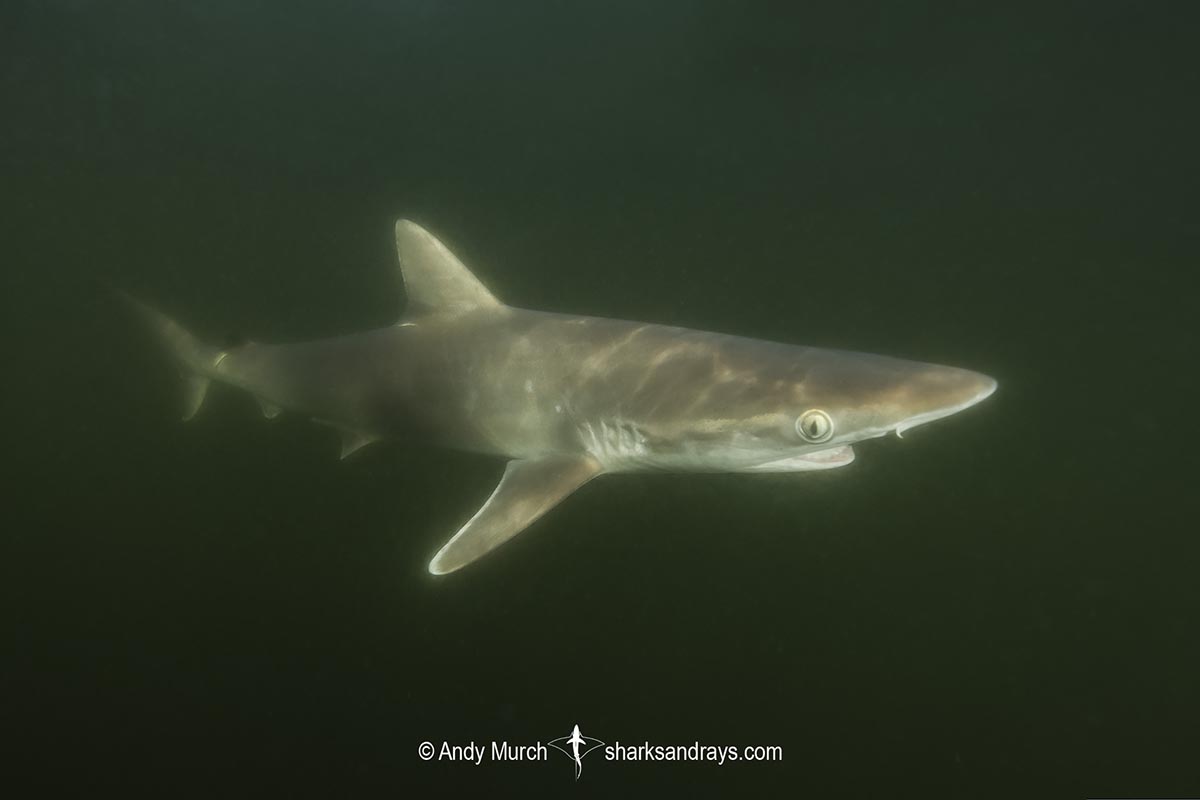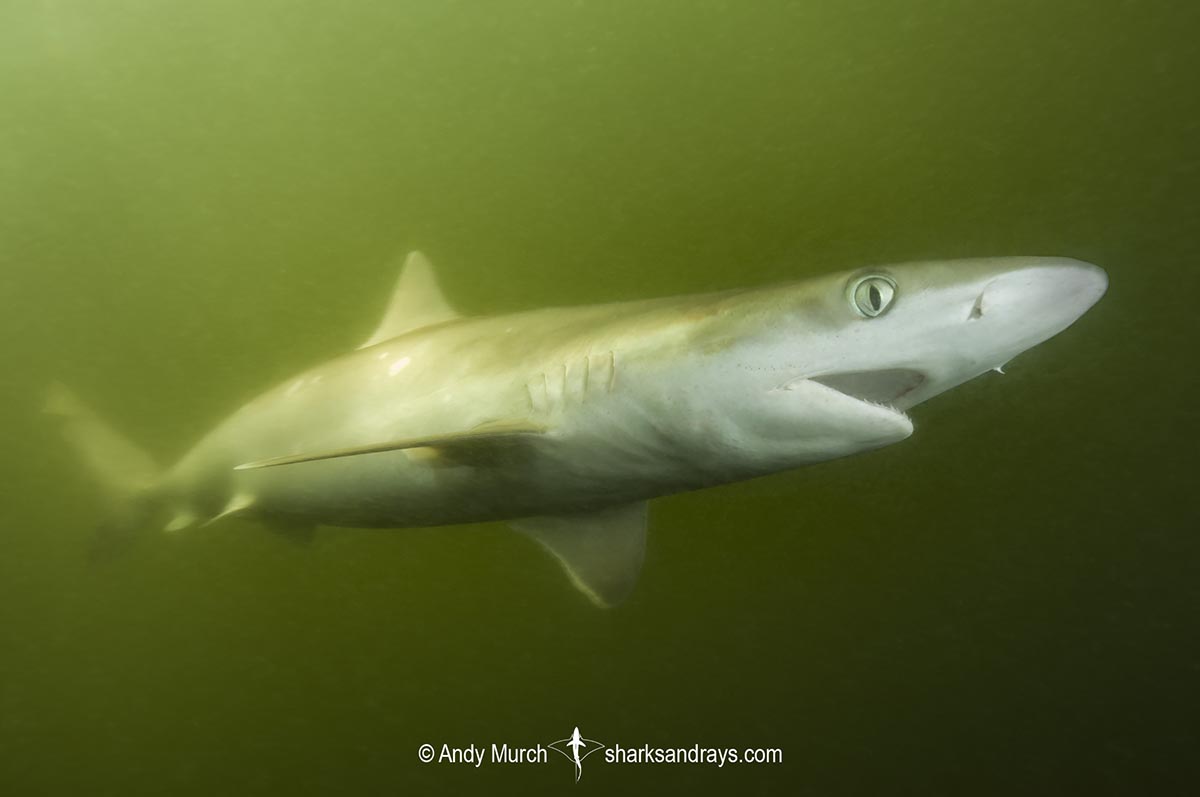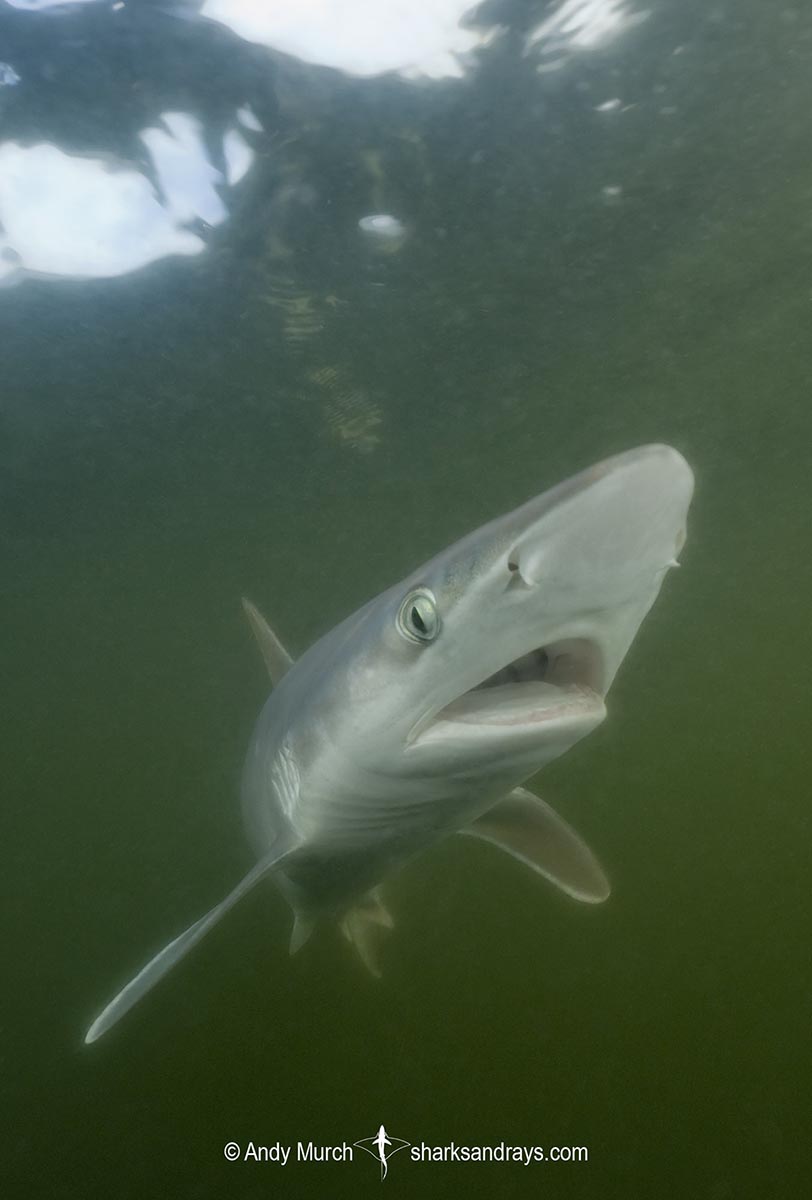Common name(s)
Atlantic Sharpnose Shark.
Binomial
Rhizoprionodon terraenovae
Synonyms
Rhizoprionodon terraenova, Scoliodon terraenovae, Squalus terraenovae.
Identification
Slender body. Snout long and pointed. Long upper labial furrows around mouth. Conspicuous row of hyomandibular pores extending backwards from the mouth. First dorsal fin origin posterior to pectoral fin free rear tip. Second dorsal fin origin over middle of anal fin base. Dorsal coloration olive-grey, grey-brown, or bronzy, with scattered white spots (in adults). Posterior margins of pectoral fins pale edged. Posterior margins of dorsal and caudal fin sometimes dusky or black; upper caudal lobe more-so.
Size
Maximum length approximately 110cm. Size at birth 29-37cm.

Conservation Status
LEAST CONCERN
The Atlantic Sharpnose Shark (Rhizoprionodon terraenovae) is a fast to mature and abundant species. Although it is commonly caught as bycatch in gillnetting and shrimp trawl fisheries, nodeclines have been reported.

Habitat
Commonly found over soft mud and sand in shallow, protected bays and estuaries. Also on continental shelf from intertidal to 280m but usually 10m or less. Juveniles remain in brackish inshore water.
Distribution
Western North Atlantic. The Atlantic sharpnose shark is found from New Brunswick, Canada (in summer) to the Yucatan Peninsula, including the Gulf of Mexico.
Reproduction
A viviparous species with yolk-sac placenta. 4-7 pups per litter. Gestation 10-11 months. Annual reproductive cycle. In North Carolina, mating takes place in shallow water from late May to the end of July.
Diet
Diet consists of small bony fishes and crustaceans.
Behavior
Atlantic sharpnose sharks migrate northward and into shallower water in the summer. In the Carolinas, the winter migration into deeper water begins in late October.
Reaction to divers
Unknown, but likely very shy due to its small size.
Diving logistics
Rarely if ever encountered by divers. The images on this page are of released animals, that I encountered while accompanying researchers from USM. Atlantic sharpnose sharks were the most common shark caught during tagging studies close to the mouth of the Mississippi River. However, visibility was heavily affected by run off from the river so this is not an ideal location to dive in.





